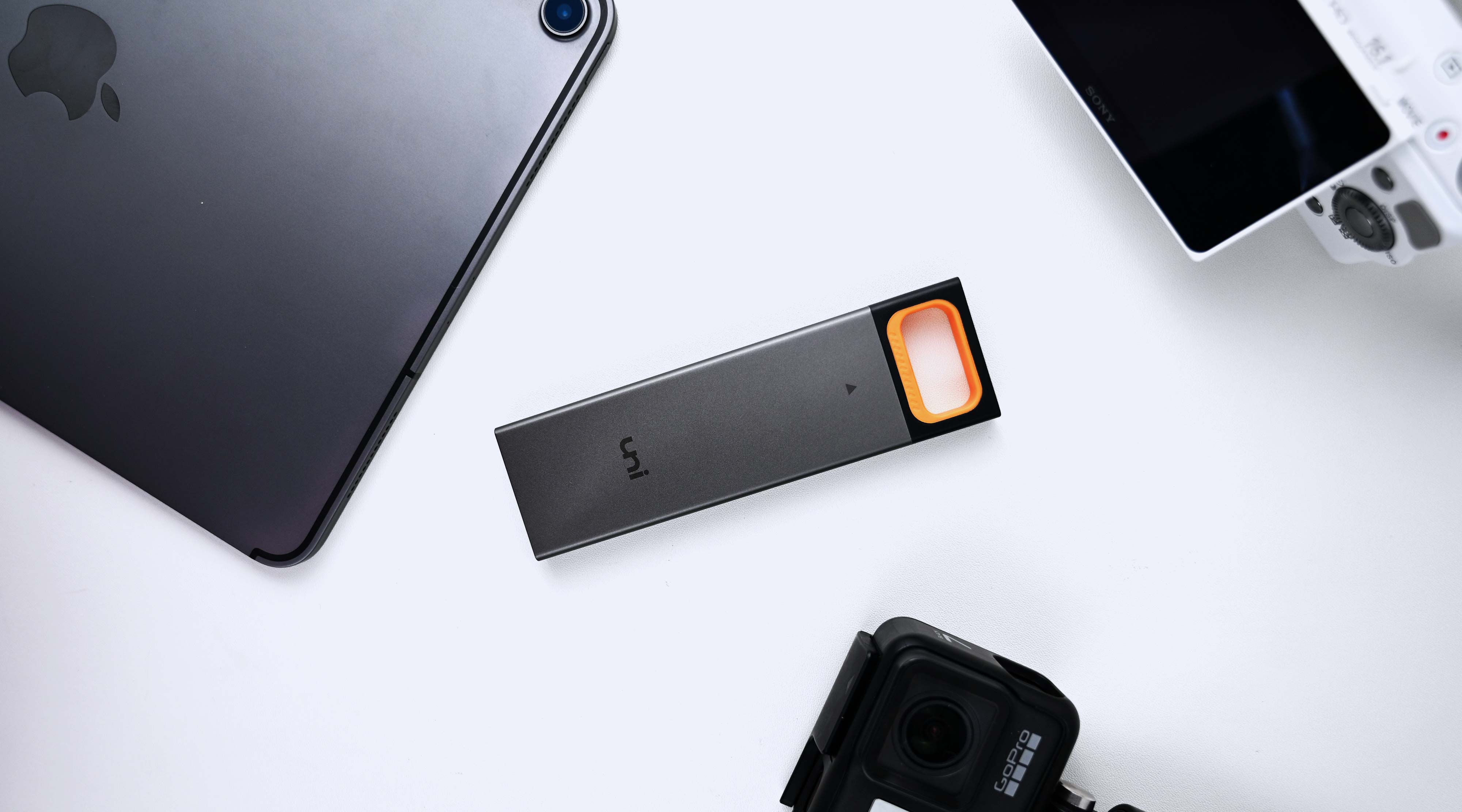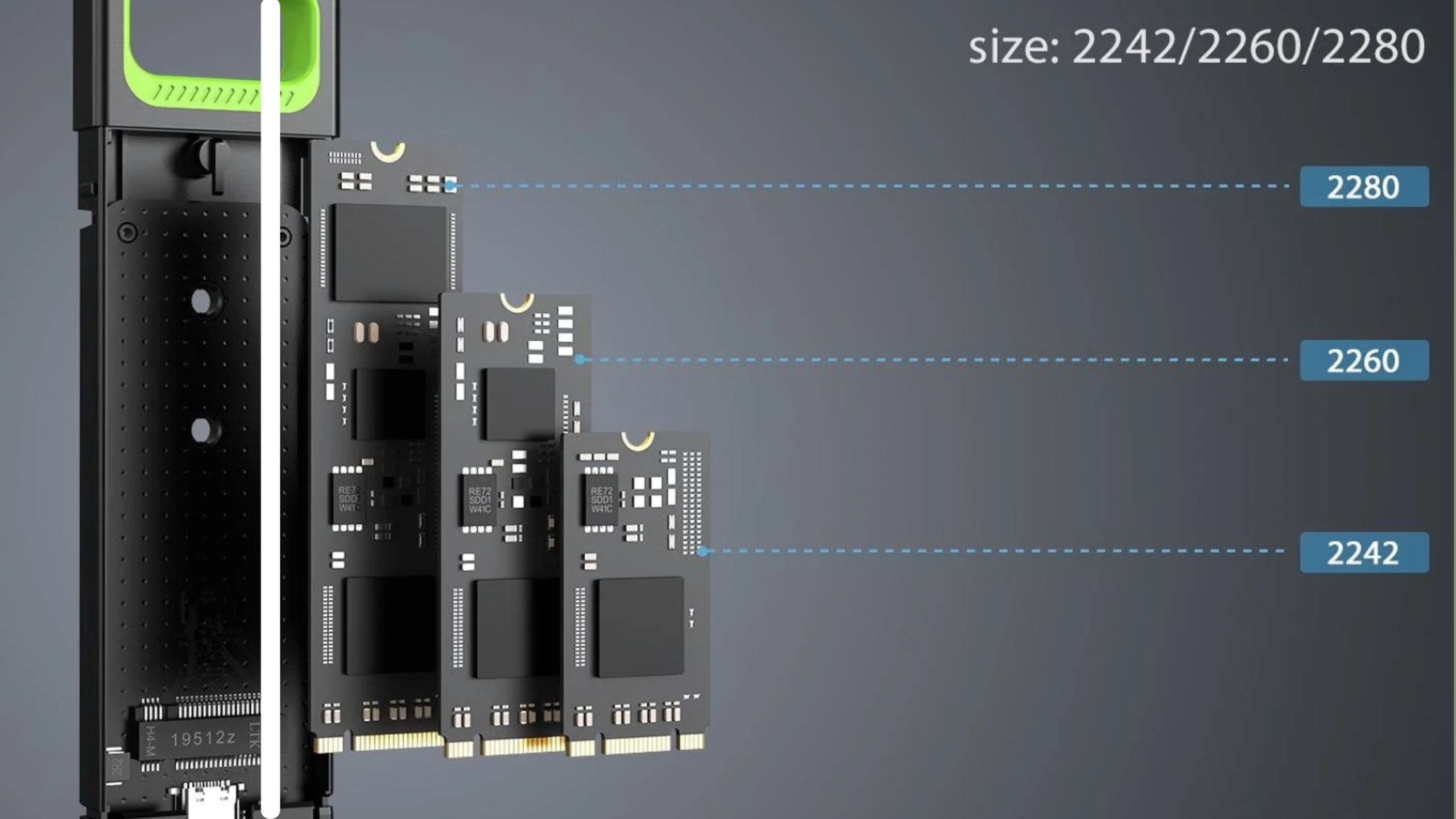Unleash the Power of M.2 SSD Enclosures: A Comprehensive Guide for the Tech Enthusiast
April 21, 2023 7 min read 1 Comment
Ideal for individuals who appreciate a DIY project and prefer not to invest over $200 in a high-speed SSD.
💎 What is an m 2 SSD Enclosure and Why Do You Need It?
M.2 SSD enclosures are handy little gadgets that house M.2 solid-state drives (SSDs), allowing you to convert these high-speed storage devices into portable, external storage solutions. If you've got an M.2 SSD lying around or are considering an upgrade, an M.2 SSD enclosure is the perfect companion to help you maximize your storage potential.
This setup allows you to tap into the blazing-fast speeds of M.2 SSDs without having to install them internally. The majority of use cases include cloning SSDs from a PC (quickly reinstalling the system); using it as a spare SSD (similar to large-capacity storage cards); recovering important information from crucial personal computers; making Mac Time Machine backups faster; and utilizing Windows to go.
If you're a tech enthusiast looking to expand your storage capabilities or take advantage of your M.2 SSD's full potential, then an M.2 SSD enclosure is an essential investment.
💎 How to Choose the Right Type of M.2 SSD Enclosure for Your Needs
When choosing an SSD enclosure, there are several factors to consider, such as the type of SSD, the form factor, the size of the ssd.
The type of SSD you have must depend on your specific needs, such as the amount of storage space you need and the speed performance you require.
🔹 Type of SSD
The connection type for your SSD enclosure depends on the device you plan to use it with and the SSD itself. When choosing an enclosure, consider the compatibility of the following interfaces and physical connections:
-
SATA: Serial ATA (SATA) is a common interface for connecting storage devices like SSDs and HDDs. If your SSD uses the SATA interface, you'll need an enclosure that supports SATA connections. SATA enclosures typically connect to your device via a USB port, such as USB 3.0 or USB 3.1 Gen 2.
-
NVMe PCIe: NVMe (Non-Volatile Memory Express) is a high-speed interface designed for SSDs using the PCIe (Peripheral Component Interconnect Express) bus. If your SSD utilizes NVMe PCIe, you'll need an enclosure that supports NVMe PCIe connections.
The form factor should also be considered carefully, as it will determine the size of the enclosure.
🔹 Form Factors
M.2: This form factor is the most prevalent and is frequently employed in laptops and other portable devices due to its compact size. M.2 SSDs come in various lengths, allowing for different storage capacities. They can connect via SATA or PCIe interfaces, with NVMe SSDs using the latter for faster performance. (🌟🌟🌟🌟🌟)
2.5-inch: This form factor resembles traditional hard disk drives (HDD) and is compatible with most laptops and desktops. It connects via a SATA cable and is a common choice for SATA SSDs.
mSATA: mSATA SSDs are smaller than full-size SATA SSDs and are designed for small systems with limited space. They use a compact form factor but are not interchangeable with M.2 SSDs. mSATA SSDs support only SATA interfaces.
PCIe add-in card (AIC): These SSDs resemble PCIe expansion cards and are suitable for high-performance systems. They connect via PCIe slots and can support both AHCI and NVMe protocols. AIC SSDs offer faster speeds than SATA SSDs.
U.2: U.2 SSDs are similar in size to 2.5-inch drives but are slightly thicker. They connect using a different method and transmit data via the PCIe interface. U.2 SSDs are commonly used in high-end workstations, servers, and enterprise applications requiring larger storage capacities.
🔹 Size of the M.2 SSD
M.2 SSDs come in various sizes, primarily determined by their length and width. The size of an M.2 SSD is represented as a 4- or 5-digit number, where the first two digits indicate the width, and the last two or three digits represent the length (in millimeters).
The most common sizes of M.2 SSDs are:
2230: With dimensions of 22mm x 30mm, these SSDs are typically used in small devices like tablets or ultra-compact laptops due to their small size and lower storage capacities.
2242: Measuring 22mm x 42mm, 2242 M.2 SSDs offer slightly more storage capacity than 2230 SSDs and are commonly found in ultrabooks, tablets, and some laptops.
2260: These M.2 SSDs are 22mm x 60mm in size, providing more storage capacity than the smaller sizes. They are typically used in laptops and some desktops.
2280: With dimensions of 22mm x 80mm, 2280 M.2 SSDs are the most popular size due to their balance of storage capacity and physical size. They are widely used in laptops, desktops, and other devices requiring high-speed storage. (🌟🌟🌟🌟🌟)
22110: Measuring 22mm x 110mm, these SSDs are the largest among the common M.2 sizes and offer the highest storage capacities. They are typically used in high-performance desktops, workstations, and servers.
⏱ Setting Up Your M.2 SSD Enclosure in Just a Few Simple Steps
Setting up an SSD in an enclosure is a breeze: just open the enclosure (some brands provide tool-free designs for added convenience, while others might necessitate loosening a couple of screws), align the pins, and secure the drive to make sure it remains in place (ensure it's fully inserted).
Since external SSDs can produce considerable heat, it's advised to use thermal pads (usually included with the enclosure at no extra cost), which assist in keeping temperatures manageable during operation.
💡 Tips for Getting the Most Out of Your M 2 SSD Enclosure
-
Invest in a versatile enclosure. Make sure you know the M.2 SSDs you have (you'll likely have more than one) and take note of their sizes. Choose an enclosure that accommodates all of your SSD sizes to avoid the need for multiple enclosures.
-
Utilize the fastest connection cable for your SSD enclosure. Some enclosures come with two connectors: a USB-A cable and a USB-C cable. In certain cases, the USB-C cable may provide a faster transfer rate, though the difference may not be noticeable in most situations.
-
Take full advantage of high-quality connector cables. The cables included with the enclosure should be designed for efficient data transfer. These cables can also be used for other data transfer scenarios, extending their utility beyond just the enclosure.
🔧 Troubleshooting Tips and Solutions for Common Problems with M 2 SSD Enclosures
- SSD Not Recognized or Detected by the System
-
First, make sure that the SSD is properly seated and connected within the enclosure.
-
Check that the enclosure's connection cable is properly connected to your computer or device.
-
Try a different USB port or cable, as the issue may be with the port or cable itself.
-
Ensure that your computer's BIOS settings are set to detect the type of SSD you have installed (NVMe or SATA).
-
Update your computer's BIOS, as well as the SSD's firmware, to the latest version.
-
In Windows, go to Disk Management and check if the SSD is visible. If it is, but not assigned a drive letter, assign one manually.
- Slow Transfer Speeds or Poor Performance
-
Confirm that you're using the proper connection type (USB 3.0, USB-C, or Thunderbolt, depending on your enclosure) for optimal transfer speeds.
-
Check if your SSD is overheating, which may cause performance throttling. Make sure the thermal pad is properly installed and consider adding additional cooling solutions if necessary.
-
Update the SSD's firmware and your computer's drivers.
-
Ensure that your computer's power management settings are not limiting the SSD's performance.
- Enclosure Overheating
-
Make sure the enclosure has sufficient ventilation and is not placed in a confined space or near other heat-generating devices.
-
Check that the thermal pad is properly installed and replace it if necessary.
-
Consider using an enclosure with built-in cooling solutions, such as a heatsink or fan, if your SSD consistently runs hot.
- Enclosure Disconnects Randomly
-
Try a different USB port or cable to rule out connection issues.
-
Check for any loose connections within the enclosure and ensure the SSD is securely fastened.
-
Update your computer's drivers and the SSD's firmware.
-
In Windows, go to Device Manager and disable the USB selective suspend setting to prevent the system from disconnecting the enclosure.
In conclusion, an M.2 SSD enclosure is an indispensable tool for individuals looking to harness the power of their M.2 SSDs as portable, external storage solutions.These enclosures cater to a variety of needs, including data recovery, system cloning, and faster backups.
When selecting an M.2 SSD enclosure, it is crucial to consider factors such as the type of SSD, form factor, and size of the SSD to ensure compatibility and optimal performance.
By following the setup and troubleshooting tips provided, you can maximize the potential of your M.2 SSD enclosure and enjoy fast, reliable, and portable storage without breaking the bank.
So, whether you're a DIY enthusiast or a professional in need of more storage, an M.2 SSD enclosure can be an invaluable addition to your tech arsenal.
We'd love to read your comments down below.
Don't be shy, share your thoughts with us!
Thanks for reading, and until next time, take care!
#uniAccessories
1 Response
Leave a comment
Comments will be approved before showing up.
Related Posts
SUPPORT






Kim
September 08, 2023
My external SSD interferes with the bluetooth signal to my wireless headset. It is not fully enclosed but the cable I’m using has been great for transfer speeds so far, so I have been hesitant to change anything. If I change to a full enclosure will it mitigate the interference from the SSD to my headset?